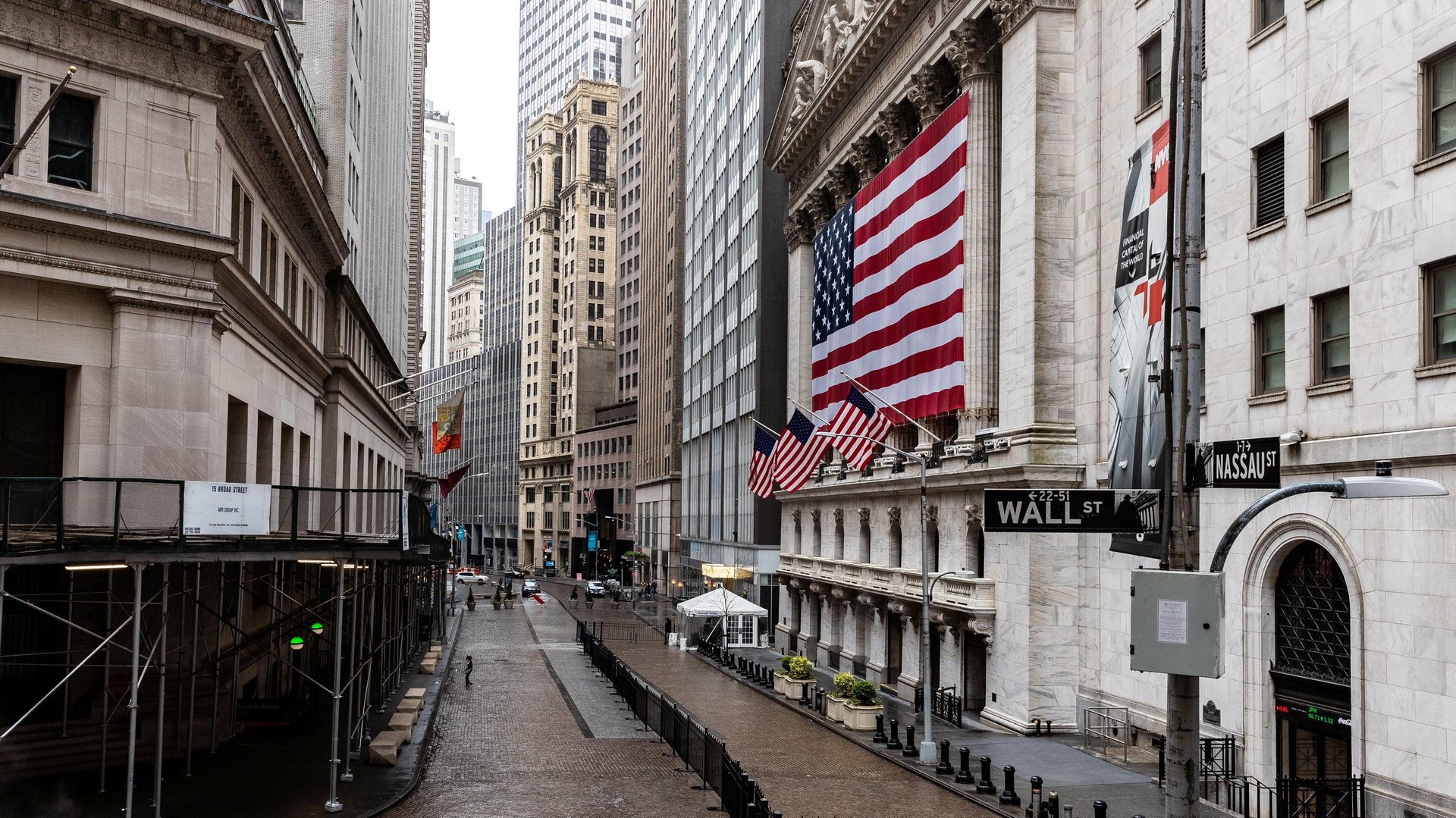The biggest office-to-residential conversion project in the US is underway
The campaign to convert empty office buildings into housing is gaining ground in New York

The covid emergency may be behind us, but the number of US offices sitting unused in the pandemic’s wake is just hitting its peak. Commercial real estate services company Cushman & Wakefield found that the national office vacancy rate last quarter was at an all-time high of 18.6%. And by the end of the decade, it estimates, the US may be sitting on more than 1.1 billion square feet of empty office space.
In a nation contending with a shortage of affordable housing, there’s a certain appeal to taking darkened, out-of-commission offices and transforming them into usable living spaces. The undertaking can be complicated—and expensive. But in New York City, where the idea has gotten major political backing, some ambitious projects are in the works, including the biggest office-to-apartment conversion currently underway in the US.
Earlier this year, New York City mayor Eric Adams issued recommendations for zoning changes and tax incentives that could free up 136 million square feet of office space for conversions to residential units. The city says the plans, if approved, could add up to 20,000 new homes for as many as 40,000 residents. “The need for housing is desperate, and the opportunity offered by underused office space is clear. We know what we need to do,” Adams told civic leaders in January.
Project of interest: 25 Water Street
While it’s located in Manhattan’s Financial District, the nation’s biggest office-to-residential conversion project isn’t just a former hub for stock trades or risk assessments. It’s also a onetime newsroom.
The building at 25 Water Street formerly headquartered The Daily News, once the largest-circulation newspaper in the country, back when the address was known as 4 New York Plaza. The newspaper left the tower permanently in the pandemic, along with other tenants like JPMorgan Chase. The building was designed in the 1960s to look like a punched card, as a nod to the tech and telecommunications offices it housed.
It’s no surprise the tower is located in lower Manhattan: That’s where the majority of conversion projects are hitting the ground in New York. And the project will also be a test case of whether office-to-housing conversions can scale. The developers plan to offer 1,300 units in all, building 50 market-rate and luxury apartments on each of the 22 existing floors and adding 10 more stories to the building.
Although 25 Water Street is the most ambitious project making the move from cubicles to bedrooms, it isn’t the only conversion underway. Other conversions have also broken ground (or carpet). Other notables include:
The onetime headquarters of the New York Stock Exchange
At 20 Broad Street, traders once paced the floors as the market rose and dipped. With a conversion to luxury residences completed (and 535 apartments added), current renters get their steps in at a rooftop terrace, a fitness center, and a dedicated yoga studio—all for a cool $7,900 a month for a one bedroom + home office unit.
The former HQ of Goldman Sachs
85 Broad Street once anchored the sprawling bank for decades; Goldman built the 1.1 million square-foot tower in the 1980s, and the building served as its headquarters until 2009. Now plans are in the works for a potential residence transformation.
A set of empty office buildings on nearby Water Street
160 Water Street (Adams toured the construction site earlier this year as part of his office building conversion campaign) is following 180 Water Street, another formerly unused office space on the block that was converted in 2017.
Converting office buildings into residences, by the digits
3.8 million: The shortfall in market-rate housing in 2022, according to Freddie Mac
28%: Unoccupied office space in the Financial District in late 2022
20,000: The number of new residences New York City mayor Eric Adams projects the city’s conversions could add to Manhattan and other boroughs
3.5 million: Square feet of Lower Manhattan offices that Metro Loft Developers has already converted into residential units, perhaps the most of any developer in New York
1.5 million: How many more square feet the developers have planned ahead, as of February 2023
Quotable
“Right now, I bet you every major developer has a feasibility study on their desk on residential conversion…I would seriously doubt the Chrysler Building’s next life will be as an office building—at least not the top [section].”
— Dan Shannon, managing partner at MdeAS Architects, talking with the FT in February 2023
The office-to-housing naysayers
The difficulties of conversion projects are well-documented, Jessica Morin, head of office research at commercial real estate firm CBRE Americas, told Quartz in December.
Shifting office floors into living spaces is an expensive endeavor. Reconfiguring the rooms on a floor can resemble a series of puzzles, with architects tasked to create up-to-code units with separate layouts and plumbing. Most challenges are structural: While office windows don’t have to open, apartment windows do; while office restrooms are communal, you’d be hard-pressed to find tenants who’d share a shower. Units need to be arranged around a building’s perimeter so each unit has access to natural light, leaving the center of large towers unusable. Call it a renovation Rubik’s cube.
The larger issue may not be the cost for renovators, but for renters and buyers. Developers want to convert buildings into luxury apartments, rather than more modest digs. But in a country contending with shortages in affordable housing, there isn’t a demand for luxe living.
Last year, an analysis by Moody’s called office-to-apartment conversions a “fringe trend at best,” finding that just 3% of the New York offices it tracked were feasible candidates.
“[I]t’s much easier to theorize about office-to-residential conversions than to execute and profit on them,” the report wrote.
